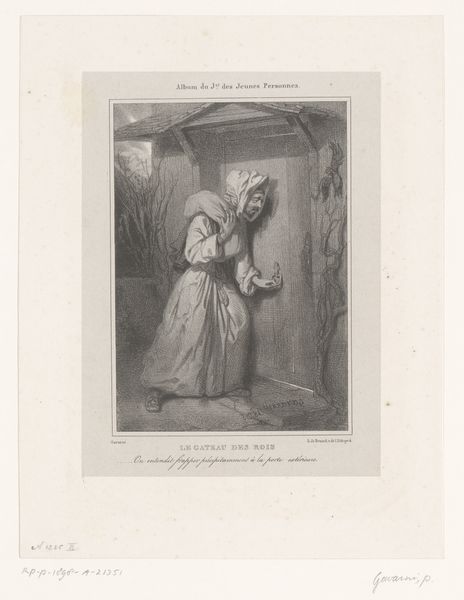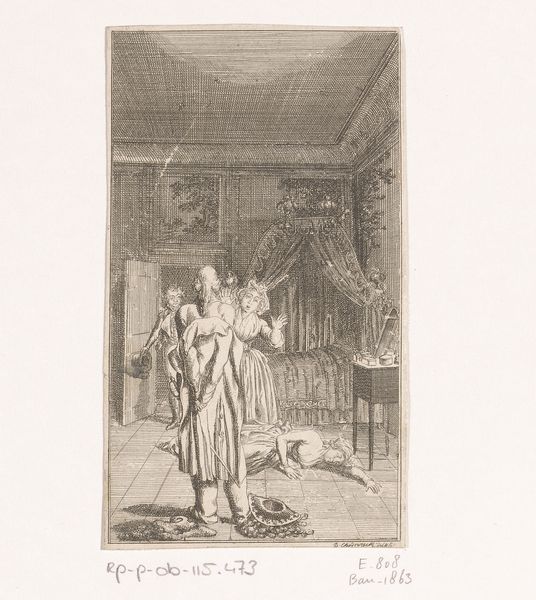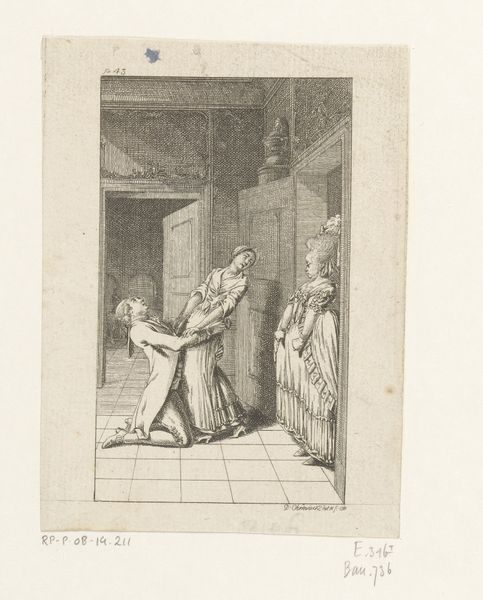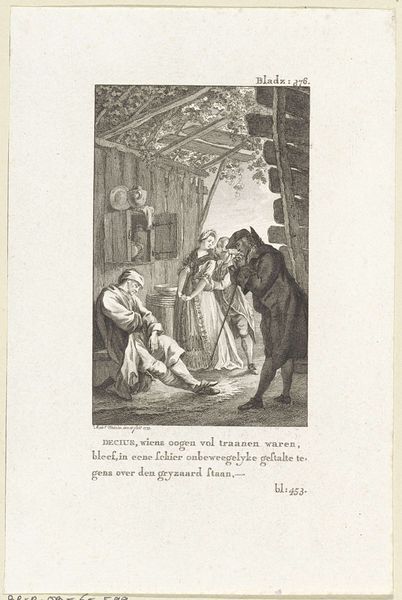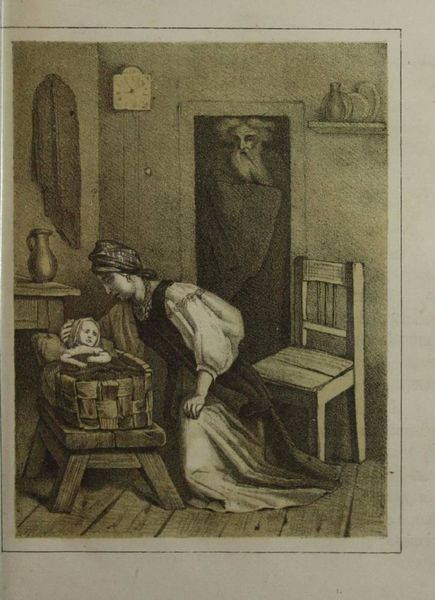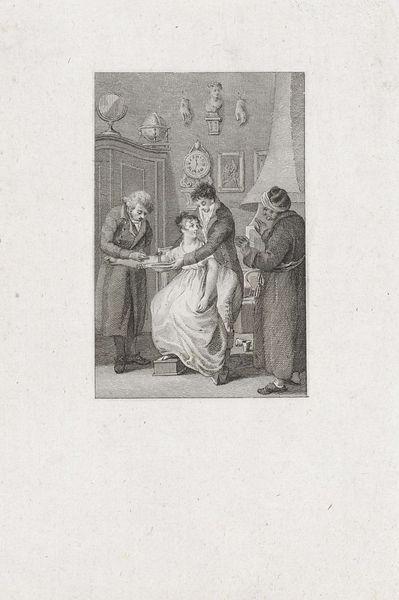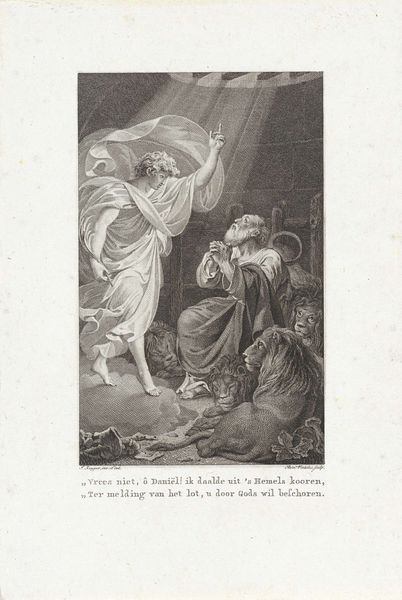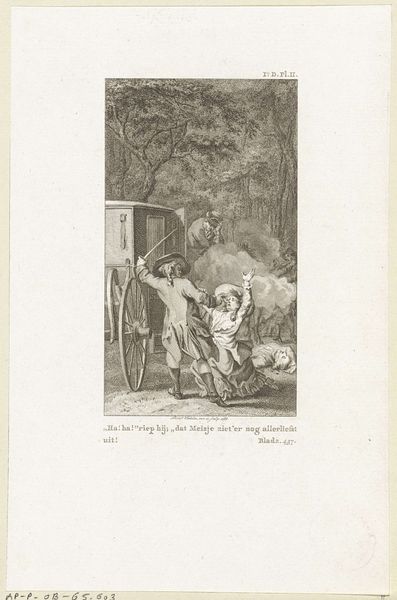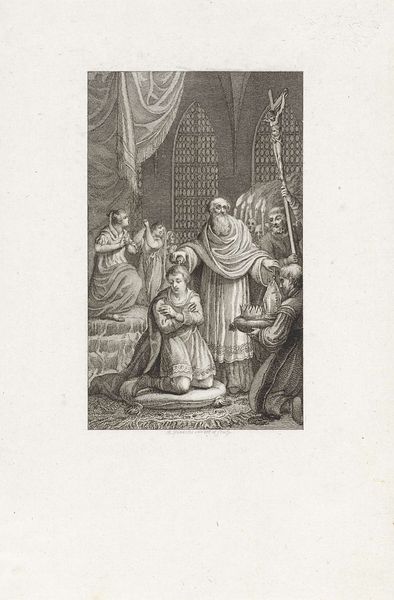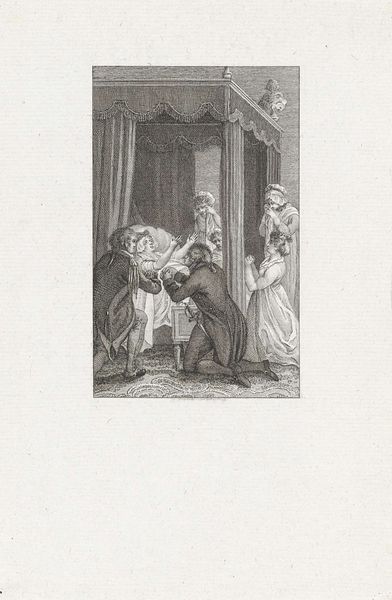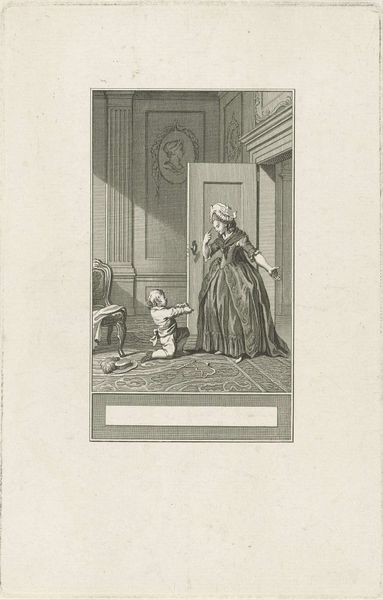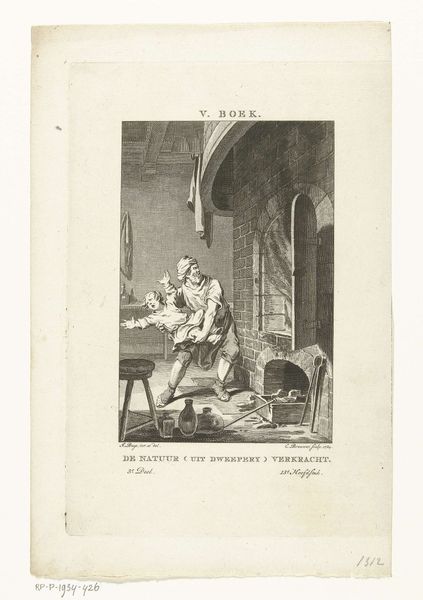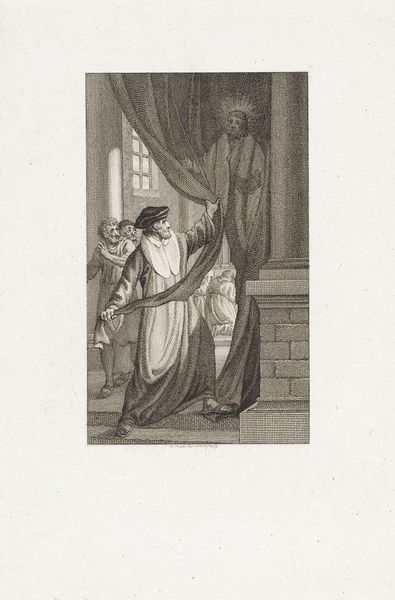
drawing, print, etching, paper, engraving
#
drawing
#
narrative-art
# print
#
etching
#
landscape
#
figuration
#
paper
#
romanticism
#
genre-painting
#
engraving
Dimensions: height 238 mm, width 154 mm
Copyright: Rijks Museum: Open Domain
Editor: This is “Heer knielt voor een dame in een schuur” from 1797, by Reinier Vinkeles. It's an etching, so the detail is incredible, even though it's small. It has such a dramatic feel... it seems almost like a stage play frozen in a moment. What do you see in this piece? Curator: This print presents a fascinating window into late 18th-century social and gender dynamics. We see the narrative unfold within the context of emerging Romantic ideals, moving away from grand historical themes toward more intimate, human-scale stories. What strikes me is the depiction of the woman's reaction. Editor: She seems really surprised, maybe a bit scared? Is that a common pose? Curator: Exactly. Consider the power dynamics here: a man, seemingly of higher social standing given his dress, kneeling before a woman within the rustic setting of a barn. Genre painting becomes really popular, emphasizing everyday life but also embedding social commentary. It invites reflection on hierarchy and possibly hints at themes of forbidden love or class conflict. Editor: So, the barn setting is significant? It isn't just a backdrop? Curator: Precisely! The barn, and Vinkeles' landscape art in general, are used as symbolic spaces, almost as stages upon which social dramas are enacted. The physical vulnerability of being within an aged shelter might mirror their societal vulnerabilities as well. Notice the meticulous detail with which the logs are stacked versus the unfinished style of the thatch roofing; it really begs questions about Dutch society at the time and the social implications portrayed. Editor: I never thought about the barn like that. I was focusing more on the immediate drama of the two figures. That gives me a lot to consider. Curator: That interplay is crucial to understanding the work's reception in its own time and its continued relevance to contemporary discussions about class and gender roles. These "genre" paintings provide really accessible ways to view Dutch societal constructs and tensions of the late 1700's. Editor: Wow, I’m going to look at prints a lot differently from now on. Thanks for sharing your insight!
Comments
No comments
Be the first to comment and join the conversation on the ultimate creative platform.
